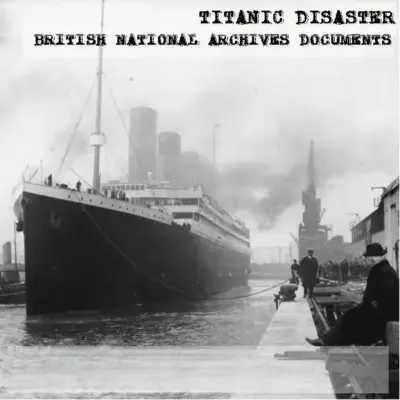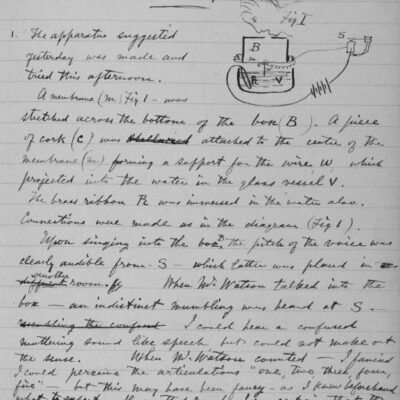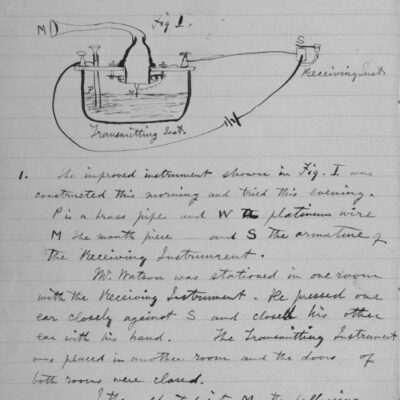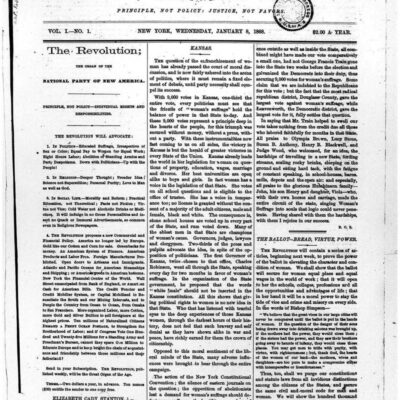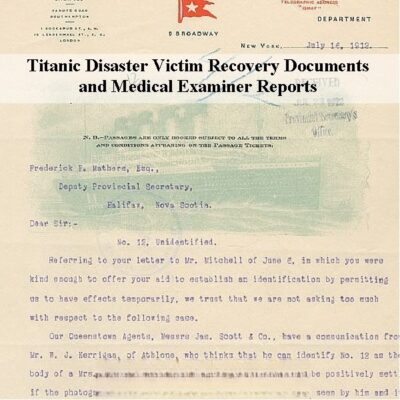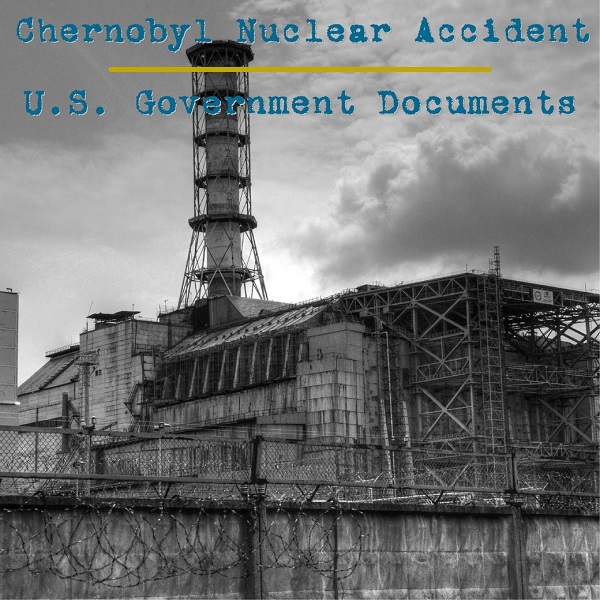
Chernobyl Nuclear Power Plant Accident
$19.50
Description
Chernobyl Disaster: A Timeline and Key Individuals
Detailed Timeline of Main Events (1939 – 2011)
Early Nuclear Research in Ukraine:
- 1939: The People’s Commissariat of Power Plants and Electrical Industry proposes concentrating Soviet nuclear research at the Ukrainian Institute of Physics and Technology (UIPhT).
- 1940: Documents indicate plans for building a cyclotron particle accelerator in Ukraine.
- 1940: Two nuclear scientists from UIPhT outline the method of producing a nuclear weapon, identifying the challenge of obtaining sufficient uranium-235.
Development of Chernobyl Nuclear Power Plant:
- 1967: The head of the Council of Ministers of the Ukrainian SSR discusses the selection of a site in Ukraine to build the Chernobyl Nuclear Power Plant.
- 1979: A KGB memo highlights construction flaws at the Chernobyl plant.
- Circa 1982: A KGB memo details a previously undisclosed accident at Chernobyl, approximately 3 years and 7 months before the April 1986 disaster.
The Chernobyl Accident (April 1986):
- April 25, 1986: Technicians at Chernobyl Reactor #4 initiate a poorly executed experiment to test the emergency electricity supply. Several operating rules are violated, including disabling the emergency shutdown system and operating with too many control rods withdrawn.
- April 26, 1986, 1:23 AM: A chain of events lasting 40 seconds culminates in a massive power surge during the experiment. The energy released is briefly 350 times the reactor’s rated capacity.
- April 26, 1986: The power surge causes an instantaneous and violent increase in heat and pressure, rupturing fuel channels and releasing steam that destroys the core of Reactor #4 (containing about 200 tons of nuclear fuel). Shattered core material is propelled through the reactor building’s roof.
- April 26, 1986: The hot core material ignites approximately 30 separate fires in the Unit 4 reactor hall and turbine building, as well as on the roof of the adjoining Unit 3. Most fires are extinguished within hours, except the main fire in the graphite moderator within Unit 4.
- April 26, 1986 (Early Report): The Director of Chernobyl reports one death, 34 hospitalizations (including 9 firefighters), the disappearance of the chief reactor operator Khodemchuk, and elevated radiation levels.
- April 26, 1986 (Soviet Minister of Power and Electrification Memo): Downplays the accident, stating that the Ministry of Health does not require special measures, including population evacuation.
- April 27, 1986: Evacuation orders are issued for Pripyat, a day and a half after the explosion. Residents are told they will only be gone for a few days.
- April 27, 1986 (KGB Narrative): Details the activities of the Ministry of Internal Affairs of the Ukrainian SSR (MVD) and security services in responding to the accident and preparing for the evacuation of Pripyat.
- April 28, 1986: A report on radioactive fallout claims that Kiev is currently safe.
- April 29, 1986: Ukrainian Health Minister Andrei Serdyuk reports on radioactive fallout, evacuation procedures, and the number of hospitalized individuals.
- April 30, 1986: A memo from the Soviet Minister of Internal Affairs addresses rumors regarding the Chernobyl accident.
- Early May 1986: Soviet authorities proceed with May Day outdoor parades in the region despite the accident.
- Approximately Two Weeks After Explosion: The graphite fire continues to burn, releasing radioactivity into the atmosphere, until it is eventually extinguished by dropping sand, lead, dolomite, and boron from helicopters.
- Following the Accident: Radiation detectors in other countries, hundreds of miles away, trigger alarms, forcing the Soviet Union to publicly acknowledge the Chernobyl accident.
- Post-Accident (within the first year): Approximately 25,000 people, mainly Soviet Army troops, are dispatched to Chernobyl for initial cleanup efforts. Thousands of “liquidators” are employed in the following years.
- Around October 1986: Construction of the “Sarcophagus,” a 21-story high metal and concrete shelter, is completed to enclose the damaged Reactor #4 and remaining radioactive material. This is recognized as a temporary solution.
- November 11, 1987: A report details measures taken by health ministries in the aftermath of the accident.
- September 24, 1987: A KGB memo outlines what information about Chernobyl should not be made public.
- 1988: A GAO report, “Nuclear Power Safety International Measures in Response to Chernobyl Accident,” is released.
- 1991: A GAO report, “Nuclear Power Safety Chernobyl Accident Prompted Worldwide Actions but Further Efforts Needed,” is published.
- 1992: A Congressional hearing, “The Effects of the accident at the Chernobyl nuclear power plant,” is held.
- 1996: A Congressional hearing, “The legacy of Chernobyl, 1986 to 1996 and beyond,” takes place.
- December 2000: The Chernobyl Nuclear Power Plant is finally shut down completely.
- By 2006: Plans for a New Safe Confinement (NSC) shelter are approximately 7 years behind schedule, with a completion target of no sooner than 2012.
- 2007: A GAO report, “Construction of the Protective Shelter for the Chernobyl Nuclear Reactor Faces Schedule Delays, Potential Cost Increases, and Technical Uncertainties,” is released.
- February 2011: Reports surface that construction of the new shelter might be halted due to a $1 billion funding shortfall.
- February 2011: A United Nations report estimates that the Chernobyl disaster caused thyroid cancer in 7,000 children in the affected area, with 15 fatalities among these cases.
Other Relevant Events Mentioned:
- 1957-1958: A less publicized Soviet nuclear “accident” occurs near Kyshtym.
- 1958: Media reports begin to surface about a nuclear accident near Kyshtym.
- 1976: Soviet dissident Dr. Zhores Medvedev brings wider attention to the Kyshtym incident through his writings, alleging thousands of casualties and widespread contamination from an explosion involving nuclear waste.
- 1981: A CIA report covers the Kyshtym nuclear incident.
- 1982: The Department of Energy releases a report, “An Analysis of the Alleged Kyshtym Disaster,” offering a study of Medvedev’s claims and suggesting a combination of events caused the contamination.
- 1986 (August): The International Atomic Energy Agency (IAEA) holds a meeting regarding the Chernobyl accident, with analytical support provided by a U.S. Department of Energy team.
- 1986-1992: The U.S. government’s National Technical Information Service produces numerous foreign press monitoring reports on Chernobyl.
Cast of Characters with Brief Bios:
- Technicians at Chernobyl Reactor #4: A group of plant workers who were conducting the experiment on April 25-26, 1986. Their operational errors and rule violations are identified as key contributing factors to the accident.
- Director of Chernobyl (Unnamed in the excerpts): The head of the Chernobyl Nuclear Power Plant who provided the initial report on the accident on April 26, 1986, detailing casualties and radiation levels.
- Khodemchuk (First Name Not Provided): The chief reactor operator at Chernobyl Reactor #4 who was reported missing in the initial hours after the accident.
- Andrei Serdyuk: The Ukrainian Health Minister in April 1986. He provided reports on the radioactive fallout, evacuation procedures, and the number of hospitalized individuals following the Chernobyl disaster.
- Minister of Power and Electrification of USSR (Unnamed in the excerpts): A high-ranking Soviet official who issued a memo on April 26, 1986, downplaying the severity of the Chernobyl accident and suggesting no immediate need for evacuation.
- Minister of Internal Affairs of USSR (Unnamed in the excerpts): A high-ranking Soviet official who sent a memo on April 30, 1986, addressing rumors circulating about the Chernobyl accident.
- Soviet Army Troops: Approximately 25,000 personnel, primarily from the Soviet Army, who were dispatched to the Chernobyl site in the first year after the accident for initial cleanup operations.
- Liquidators: A broad term for the thousands of workers, beyond the initial military personnel, who were employed in the years following the Chernobyl accident to conduct cleanup and containment efforts.
- Dr. Zhores Medvedev: An exiled Soviet geneticist who brought wider international attention to the 1957-1958 nuclear incident near Kyshtym through his writings starting in 1976.
- U.S. Department of Energy (DOE) Team of Experts: A group of specialists from various national laboratories (Argonne, Brookhaven, Oak Ridge, Pacific Northwest) formed by the DOE to analyze the Chernobyl accident and provide support for international meetings.
- Lawrence Livermore National Laboratory Researchers: Scientists at this lab who conducted measurements to determine the level of radioactive fallout from Chernobyl on the western United States.
- United Nations Report Authors: The individuals or team responsible for the February 2011 report estimating the impact of the Chernobyl disaster on thyroid cancer rates in children.
Chernobyl Nuclear Power Plant Accident CIA, KGB, Soviet, Ukraine, DoD, Energy Dept, Congress Files
4,620 pages of CIA, Department of Defense, Department of Energy, Congressional, GAO, and foreign press monitoring files related to the Chernobyl Nuclear Accident.
On Sunday April 26, 1986, at the Chernobyl Nuclear Power Plant near Pripyat, Ukraine, reactor #4 exploded. For the 25 years from 1986 to 2011, this incident has been referred to as the world’s worst nuclear power plant accident.
THE ACCIDENT
According to reports filed with International Atomic Energy Agency (IAEA) on April 25, 1986, technicians at the Chernobyl plant launched a poorly executed experiment to test the emergency electricity supply to one of its Soviet RBMK type design reactors. The test was meant to measure a turbogenerator’s ability to provide in-house emergency power after shutting off its steam supply. During the experiment the technicians violated several rules in place for operating the reactor.
During the experiment, the emergency shutdown system was turned off. The reactor was being operated with too many control rods withdrawn. These human errors, coupled with a design flaw that allowed reactor power to surge when uncontrolled steam generation began in the core, set up the conditions for the accident.
A chain of events lasting 40 seconds occurred at 1:23 AM on April 26.
The technicians operating the reactor put the reactor in an unstable condition, so reactor power increased rapidly when the experiment began. Subsequent analysis of the Soviet data by U.S. experts at the Department of Energy, suggests the power surge may have accelerated when the operators tried an emergency shutdown of the reactor. According to Soviet data, the energy released was, for a fraction of a second, 350 times the rated capacity of the reactor. This burst of energy resulted in an instantaneous and violent surge of heat and pressure, rupturing fuel channels and releasing steam that disrupted large portions of the core.
The surge destroyed the core of reactor unit four, containing approximately 200 tons of nuclear fuel. Some of the shattered core material was propelled through the roof of the reactor building. The hot core material of reactor 4 started about 30 separate fires in the unit 4 reactor hall and turbine building, as well as on the roof of the adjoining unit 3. All but the main fire in the graphite moderator material still inside unit 4 were extinguished in a few hours.
It was a day and a half before the people living in Pripyat were ordered to evacuate. The residents were told they would only be gone for several days, so they left nearly everything behind. They never returned. Soviet authorities made the decision not to cancel May 1, May Day, outdoor parades in the region four days later.
The graphite fire continued to burn for nearly two weeks carrying radioactivity high into the atmosphere, until it was smothered by sand, lead, dolomite, and boron dropped from helicopters. Despite the wide spread of radiation, Soviet officials at first said very little publicly about what happened at Chernobyl. It was not until alarms from radiation detectors in other countries, many hundreds of miles away, forced the Soviets to admit to the Chernobyl accident.
Radioactive material was dispersed over 60,000 square miles of Ukraine, Belarus, and Russia. Smaller amounts of radioactive material were detected over Eastern and Western Europe, Scandinavia and even the United States. The accident has left some nearby towns uninhabitable to this day.
Radioactivity forced Soviet officials to create a 30-kilometer-wide no-habitation zone around Chernobyl, sealing off Pripyat. Still, the power plant continued to generate electricity until it was finally shut down in December 2000.
During the first year after the accident, about 25,000 people, mainly Soviet Army troops, were dispatched to the site to clean up the accident. Thousands of workers, called liquidators, were employed during the following years of the cleanup.
Around October 1986 the construction of a 21-story high metal and concrete shelter was completed, enclosing the reactor and the radioactive material that remained. Almost 200 tons of melted nuclear fuel rods remain within the damaged reactor. This containment shelter was not intended to be a permanent solution for containing the radioactive material. Over time, the shelter has weakened; rain entering through holes and cracks has caused corroding.
By 2006 the plans for a new shelter was about 7 years behind schedule, with a completion target date of no sooner than 2012. In February of 2011 it was reported that construction of the shelter may have to be halted, due to a $1 billion-dollar short fall in the funds needed to complete the structure.
A United Nations report released in February 2011 estimates the disaster caused thyroid cancer in 7,000 children in the affected area. The report said despite the high rate of cancer, only 15 fatalities in these 7,000 cases have occurred.
THE DOCUMENTS
CIA FILES
471 pages of CIA files dating from 1971 to 1991. The files cover the Soviet Union’s atomic energy program; The effect of the Chernobyl accident on the Soviet nuclear power program; and the social and political ramifications of the accident in the Soviet Union.
A 1981 report covers the less publicized Soviet nuclear “accident” near Kyshtym in 1957-58.
Media reporting of a nuclear accident near Kyshtym first appeared in 1958. It was not until 1976, when the writings of Soviet dissent Dr. Zhores Medvedev began to appear, that wider attention was given to this subject. Medvedev, an exiled Soviet geneticist, claimed in several articles and books that a “disaster” occurred near Kyshtym in 1957/58. He alleged that thousands of casualties and widespread, long-term radioactive contamination occurred as the result of an explosion involving nuclear waste stored in underground shelters.
The general consensus today is that a combination of events, rather than a single isolated incident at Kyshtym nuclear energy complex caused the radioactive contamination in the area. A study of the claims by Medvedev can be found in the Department of Energy section, in the 1982 report “An Analysis of the Alleged Kyshtym Disaster”
KGB FILES
41 pages of Комите́т Госуда́рственной Безопа́сности (Soviet Committee for State Security) also known as the KGB, files related to Chernobyl. English translations with Russian and Ukrainian transcription and original documents.
Highlights include:
A 1979 KGB memo on construction flaws at Chernobyl.
A 1982 KGB memo about an accident at Chernobyl about 3 year and 7 months before the April 26, 1986 accident, that was kept secret.
A September 24, 1987 memo on what information about Chernobyl should not be made public.
UKRAINE GOVERNMENT & LOCAL OFFICIALS FILES
117 pages of documents produced by the Ukrainian government and local officials from 1939 to 1993, related to the history of nuclear research in the Soviet Socialist Republic and the Chernobyl Nuclear Power Plant.
Highlights include:
A 1939 letter from People’s Commissariat of Power Plants and Electrical Industry to the Council of People’s Commissars of USSR, proposing that the Soviet government concentrate nuclear research at the Ukrainian Institute of Physics and Technology (UIPhT) because the Ukraine would be a very good base for the nuclear studies.
1940 documents concerning building a cyclotron particle accelerator in the Ukraine.
A 1940 letter contains the thoughts of two nuclear scientists from the UIPhT on the construction of a nuclear bomb. These two Ukrainian physicists were first Soviet scientists who revealed the method of producing a nuclear weapon. “Until the present moment, nowhere in the world has produced a chain reaction in uranium of this type in experiments. However, according to information that spread to us, this issue is intensively researched in the USA and Germany. In our country, this type of work also takes place, and it is highly desirable to intensify it.” The problem they stated they faced was having enough uranium-235.
A 1967 letter from the head of the Council of Ministers of the Ukrainian SSR, on the selection of a site in Ukraine to build the Chernobyl Nuclear Power Plant.
An April 26, 1986 early report by the Director of Chernobyl reporting death of one, hospitalization of 34, including 9 firemen, disappearance of the chief reactor operator Khodemchukand and radiation levels.
April 27, 1986 evacuation orders.
April 28, 1986 report on radioactive fallout and claims that Kiev is currently safe.
April 29, 1986 Ukrainian Health Minister Andrei Serdyuk’s report covers the issue of radioactive fallout following the accident, evacuation procedure, and number of hospitalized.
November 11, 1987 report on the measures taken by health ministries in the aftermath of the accident.
SOVIET GOVERNMENT FILES
93 pages of documents from Soviet agencies such as the Soviet Ministry of Power and Electrification, USSR Ministry of Internal Affairs and the Supreme Soviet of the Soviet Union.
Highlights include:
An April 26, 1986 memo from the Soviet Minister of Power and Electrification downplays the accident stating, “In the opinion of the 3rd Main Directorate of the USSR Ministry of Health it is not required to take special measures, including the evacuation of the population from the city.”
An April 30, 1986 memo from the Minister of Internal Affairs of USSR to the Minister of Internal Affairs of the Ukraine on rumors regarding the Chernobyl accident.
U.S. GOVERNMENT FOREIGN PRESS MONITORING
900 pages of foreign media monitoring reports from 1986 to 1992, produced by the U.S. government’s National Technical Information Service’s U.S. Joint Publication Research Service. They contain information primarily from Russian and Eastern Block news agency transmissions and broadcasts, newspapers, periodicals, television, radio and books. Materials from non-English language sources are translated into English.
The reporting includes firsthand accounts of experiences during all points of the Chernobyl disaster. Topics covering the accident and its aftermath including domestic and international politics, sociological affairs, nuclear plant fire, evacuations, sealing the reactor, cleanup mobilization, health implications, and people returning to region.
DEPARTMENT OF ENERGY REPORTS
1,244 pages of reports dating from 1982 to 2009 produced or commissioned by the Department of Energy.
The agencies and institutions contributing to these reports include Los Alamos National Laboratory, United States Nuclear Regulatory Commission, Lawrence Livermore National Laboratory, Savannah River Nuclear Solutions, Oak Ridge National Laboratory, Brookhaven National Laboratory, Argonne National Laboratory, and the Pacific Northwest Laboratory.
Highlights include:
The 1986 Report of the U.S. Department of Energy’s Team Analyses of the Chernobyl-4 Atomic Energy Station Accident Sequence DOE/NE-0076.
The U.S. Department of Energy (DOE) formed a team of experts from Argonne National Laboratory, Brookhaven National Laboratory, Oak Ridge National Laboratory, and Pacific Northwest Laboratory. The DOE team provided the analytical support to the U.S. delegation for the August, 1986 meeting of the International Atomic Energy Agency (IAEA), and to subsequent international meetings. The DOE team analyzed the accident in detail, assessed the plausibility and completeness of the information provided by the Soviets, and performed studies relevant to understanding the accident.
The 1987 report Radioactive Fallout from the Chernobyl Nuclear Reactor Accident
The Lawrence Livermore National Laboratory performed a variety of measurements to determine the level of the radioactive fallout on the western United States. The laboratory used gamma-spectroscopy to analyze air filters from the areas around Lawrence Livermore National Laboratory in California. Filters were also analyzed from Barrow and Fairbanks, Alaska. Milk from California and imported vegetables were also analyzed for radioactivity.
Other report titles include: An Analysis of the Alleged Kyshtym Disaster; Workshop on Short-term Health Effects of Reactor Accidents; Preliminary Dose Assessment of the Chernobyl Accident; Internally Deposited Fallout from the Chernobyl Reactor Accident; Report on the Accident at the Chernobyl Nuclear Power Station; Radioactive Fallout from the Chernobyl Nuclear Reactor Accident; Radioactivity in Persons Exposed to Fallout from the Chernobyl Reactor Accident’ Radioactive Fallout in Livermore, CA and Central Northern Alaska from the Chernobyl Nuclear Reactor Accident; Projected Global Health Impacts from Severe Nuclear Accidents – Conversion of Projected Doses to Risks on a Global Scale – Experience From Chernobyl Releases; The Chernobyl Accident – Causes and Consequences; Chernobyl Lessons Learned Review of N Reactor; Reconstruction of Thyroid Doses for the Population of Belarus Following the Chernobyl Accident; The characterization and risk assessment of the Red Forest radioactive waste burial site at Chernobyl Nuclear Power Plant; Estimated Long Term Health Effects of the Chernobyl Accident; and Environmental Problems Associated With Decommissioning the Chernobyl Nuclear Power Plant Cooling Pond.
DEPARTMENT OF DEFENSE REPORTS
816 pages of reports dating from 1990 to 2010 produced or commissioned by the Department of Defense.
The reports include: Chernobyl Accident Fatalities and Causes; Biomedical Lessons from the Chernobyl Nuclear Power Plant Accident; Nuclear Accidents in the Former Soviet Union Kyshtym, Chelyabinsk and Chernobyl; Retrospective Reconstruction of Radiation Doses of Chernobyl Liquidators by Electron Paramagnetic Resonance; Neurocognitive and Physical Abilities Assessments Twelve Years After the Chernobyl Nuclear Accident; Simulating Wet Deposition of Radiocesium from the Chernobyl Accident; and Radiation Injuries After the Chernobyl Accident Management, Outcome, and Lessons Learned.
GAO REPORTS
184 pages of reports from the United States General Accounting Office, whose name was later changed to the Government Accountability Office. The four reports are Comparison of DOE’s Hanford N-Reactor with the Chernobyl Reactor (1986); Nuclear Power Safety International Measures in Response to Chernobyl Accident (1988); Nuclear Power Safety Chernobyl Accident Prompted Worldwide Actions but Further Efforts Needed (1991); and Construction of the Protective Shelter for the Chernobyl Nuclear Reactor Faces Schedule Delays, Potential Cost Increases, and Technical Uncertainties (2007).
UNITED STATES CONGRESSIONAL HEARINGS
634 pages of transcripts from three Congressional hearings: The Chernobyl Accident Hearing before the Committee on Energy and Natural Resources, Ninety-ninth Congress, 2nd session on the Chernobyl accident and implications for the domestic nuclear industry, June 19, 1986; The Effects of the accident at the Chernobyl nuclear power plant hearing before the Subcommittee on Nuclear Regulation, United States Senate, One Hundred Second Congress, second session, July 22, 1992; and The legacy of Chernobyl, 1986 to 1996 and beyond hearing before the Commission on Security and Cooperation in Europe, One Hundred Fourth Congress, second session, April 23, 1996.
Chernobyl CIA Document on the Ukraine taking control of the area of Chernobyl nuclear power plant

Page from a Department of Defense report concerning the Chernobyl nuclear disaster fatalities

Chernobyl Disaster timeline, third page of a chronology from a Department of Energy report

Chernobyl Disaster timeline, fourth page of a chronology from a Department of Energy report

Chernobyl Shelter Project GAO report graphic shows proposed new shelter and its relative height to the State of Liberty and the enclosed existing shelter

Chernobyl Shelter Project GAO report information about the cost And funding of a Chernobyl shelter. Page 4

Chernobyl disaster worker Russian newspaper interview translation part 1

Chernobyl disaster worker Russian newspaper interview translation part 2

KGB File (Russian) 1986-04-27 A narrative account of the Chernobyl accident that describes the activities of Ministry of Internal Affairs of Ukrainian SSR (MVD) and security services in liquidating the aftermath of the Chernobyl accident and preparing Pripyat’s evacuation.

KGB File (English Translation) 1986-04-27 A narrative account of the Chernobyl accident that describes the activities of Ministry of Internal Affairs of Ukrainian SSR (MVD) and security services in liquidating the aftermath of the Chernobyl accident and preparing Pripyat’s evacuation.


